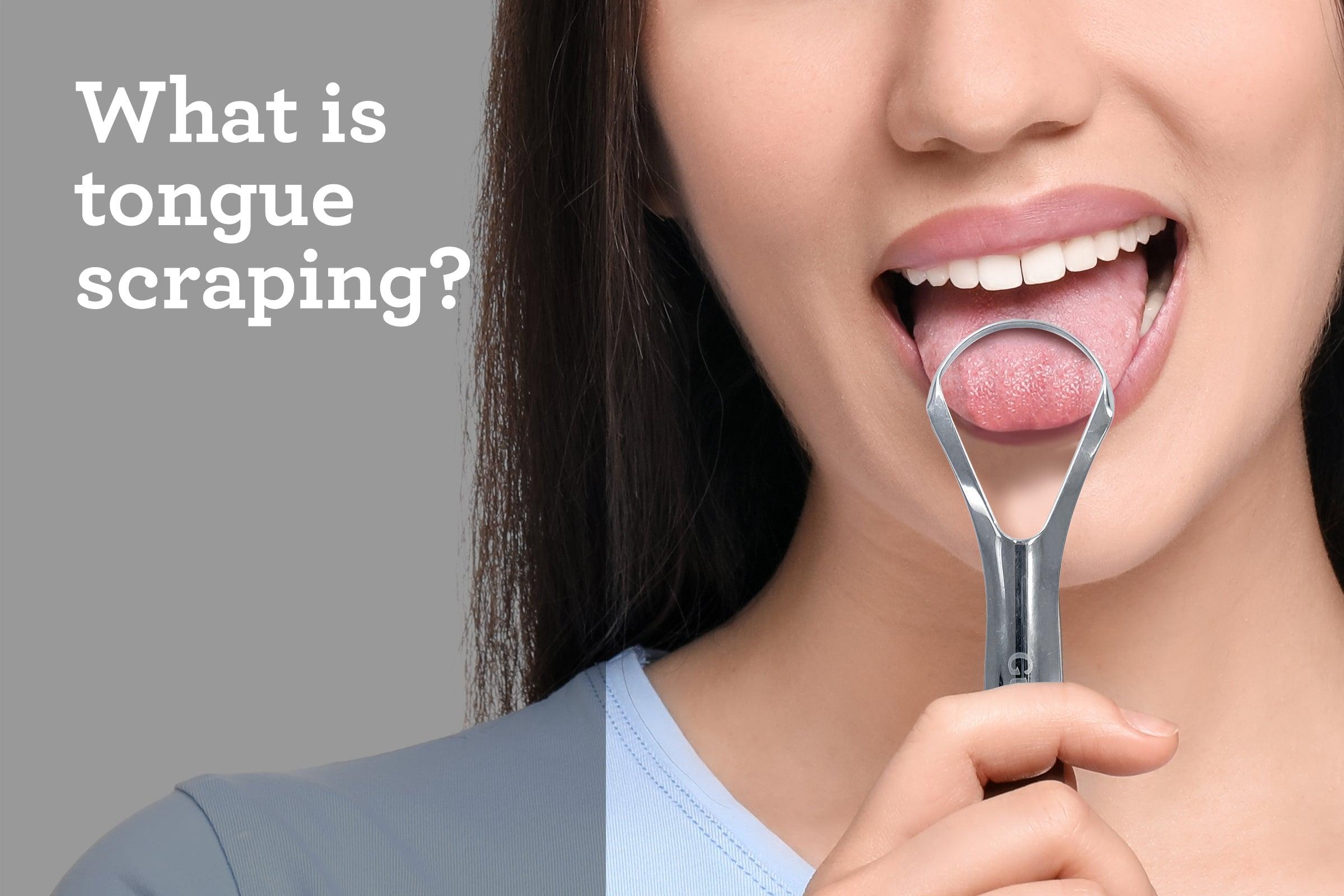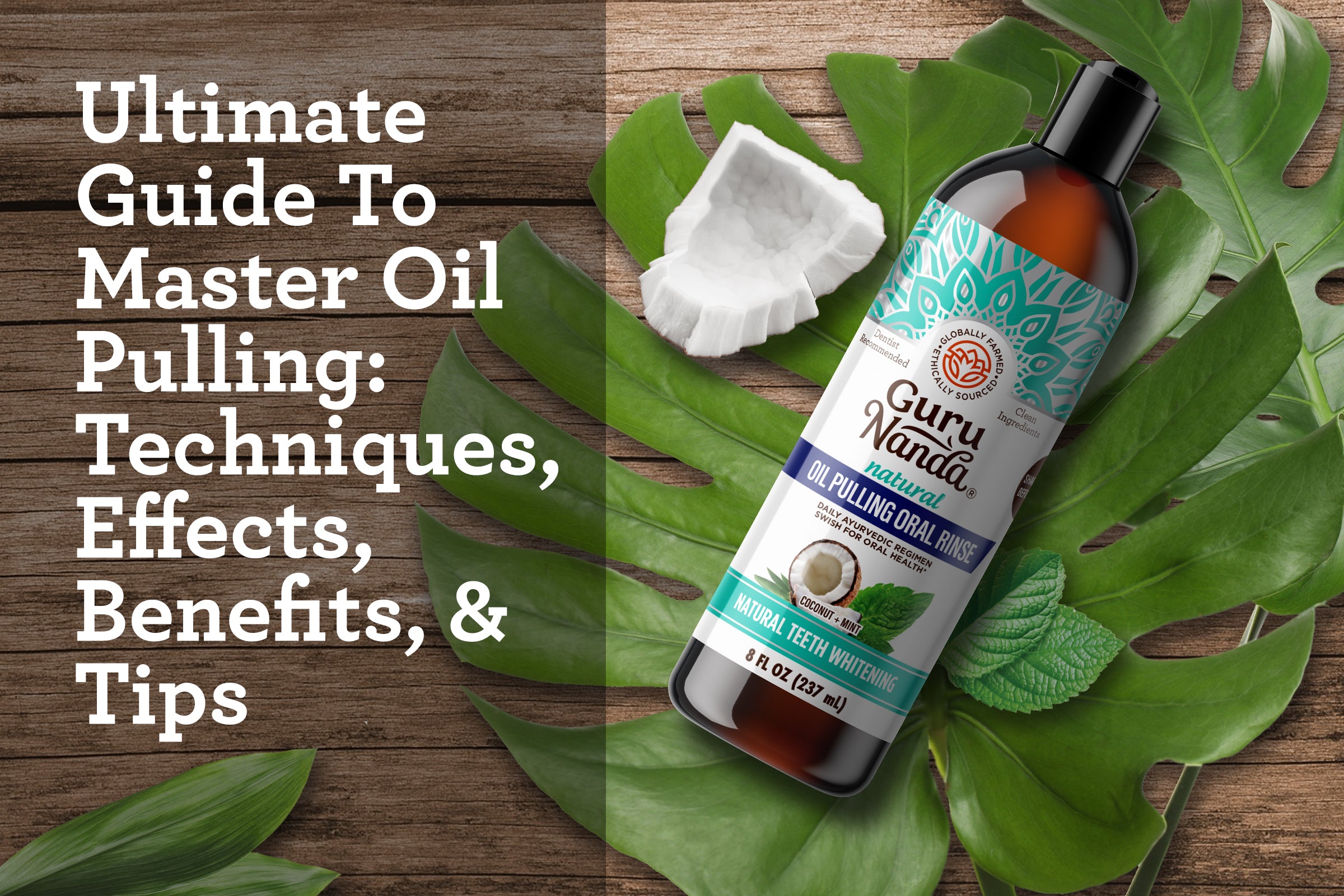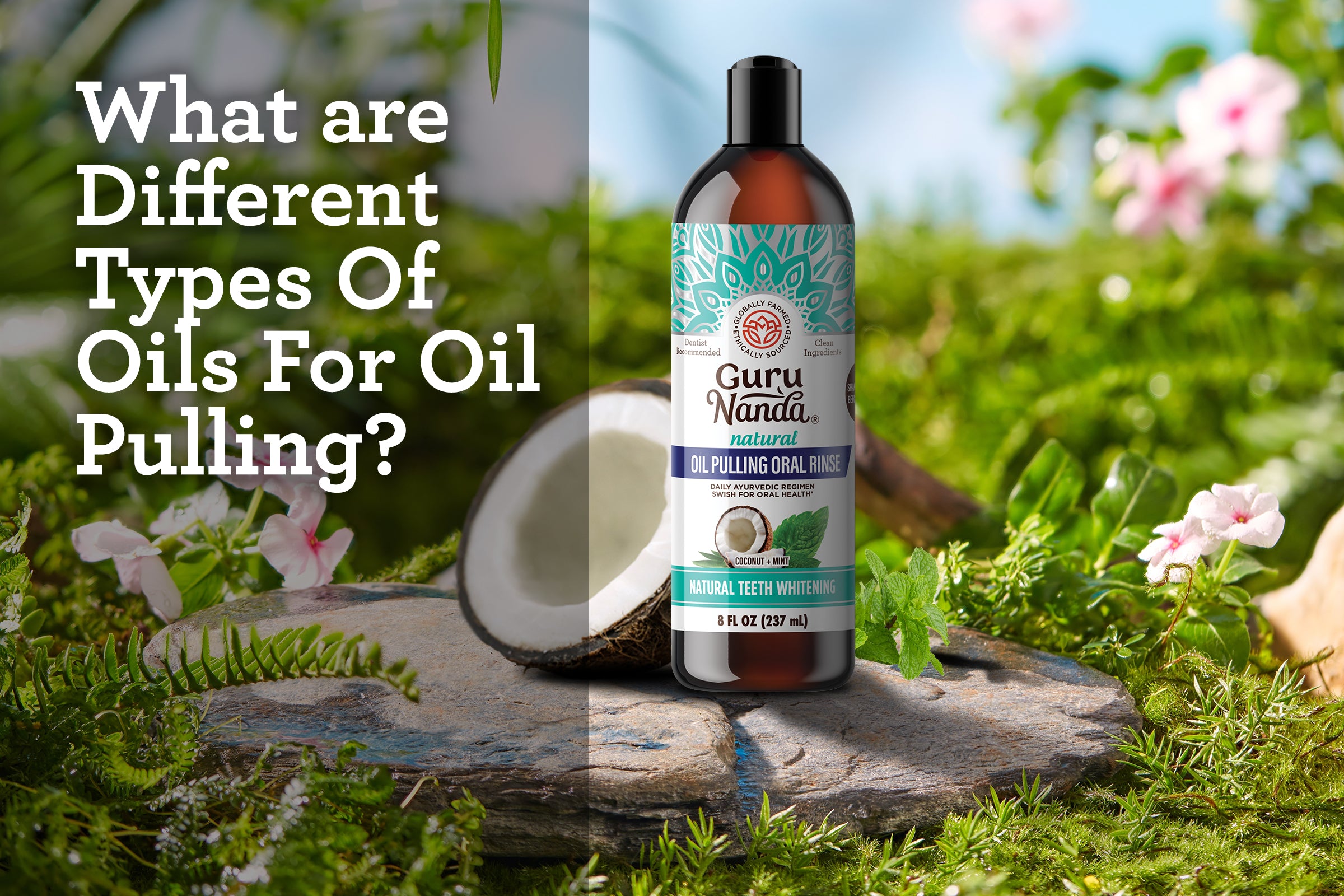¿Qué es el raspado de lengua?
El raspado lingual es una práctica de higiene que consiste en usar un raspador o limpiador lingual para eliminar residuos, bacterias y células muertas de la superficie lingual. Este proceso ofrece beneficios que el cepillado por sí solo podría pasar por alto. [1]
Nuestra lengua puede albergar hasta 20 mil millones de bacterias. Un estudio destacado por el NCBI revela que menos del 10 % de los participantes usa un raspador lingual para limpiarse la lengua, una cifra sorprendentemente baja considerando la importancia de la higiene bucal para la salud general. Si bien cepillarse la lengua con el cepillo de dientes puede ayudar, usar un raspador lingual será definitivamente más efectivo. [2]
Incorporar esta práctica a tus rutinas matutinas y vespertinas, junto con el enjuague bucal con aceite, el cepillado, el enjuague bucal y el uso de hilo dental, puede proporcionar una limpieza más profunda de la lengua. En este blog, exploraremos qué es un raspador de lengua, sus beneficios, cómo usarlo y mucho más.

¿Qué es un raspador de lengua?
Un raspador de lengua es una herramienta de higiene bucal sencilla pero eficaz, generalmente de metal o plástico, diseñada para eliminar bacterias , restos de comida y células muertas de la lengua. Estas herramientas vienen en diversas formas, como un dispositivo con extremo en forma de asa o uno similar a unas pinzas. Raspa eficazmente cualquier capa no deseada de la lengua. Si bien no sustituye el cepillado y el uso de hilo dental, el raspado lingual es un método rápido para mejorar la limpieza de la lengua y la salud bucal en general cuando se utiliza junto con las rutinas regulares de cuidado dental.[1][3]
Beneficios del raspador de lengua
El raspado lingual es una práctica subestimada, pero esencial, que beneficia significativamente la salud bucal. Aquí hay seis beneficios clave, cada uno basado en investigación científica:
Mejora la apariencia de la lengua
El uso regular de un raspador de lengua ayuda a eliminar la capa blanca y recubierta de residuos, mejorando la apariencia de la lengua y manteniendo su limpieza. [4]
Mejora la sensibilidad del gusto
Rasparse la lengua dos veces al día puede mejorar significativamente la capacidad para distinguir sabores como amargo, ácido, dulce y salado. Esta mejora en la percepción del gusto se produce al eliminar la acumulación que adormece las células sensoriales. [4]
Reduce el mal aliento
Aunque el raspado de la lengua no reemplaza al cepillado, un estudio comparativo de 2004 entre cepillos de dientes y raspadores de lengua mostró que el raspado es más efectivo que el cepillado solo para eliminar las bacterias que causan mal olor de la boca. [5]
Reduce las bacterias dañinas
Rasparse los dientes dos veces al día durante un período de siete días ayudó a reducir bacterias como el estreptococo mutans, que está asociado con el mal aliento y la caries dental. [1]
Puede mejorar la digestión
El raspado lingual activa enzimas en la saliva que ayudan a descomponer los alimentos, lo que podría mejorar la digestión desde el principio. Aunque la investigación sobre los efectos directos del raspado lingual en la digestión es limitada, un estudio observó que cuatro semanas de raspado lingual constante mejoraron los síntomas digestivos, lo que sugiere un impacto positivo en la salud digestiva general. [6]
Promueve la salud general
Los estudios han establecido desde hace tiempo una relación entre la salud bucal y el bienestar general. Incorporar el raspado lingual a la rutina de cuidado bucal puede reducir de forma constante la acumulación de bacterias y el mal aliento . Esta práctica, a su vez, puede ayudar a prevenir problemas dentales como caries y enfermedades de las encías, mejorando así la salud bucal general. [7][8]

¿Cómo utilizar un limpiador de lengua?
El raspado lingual es una forma rápida y eficaz de mejorar la higiene bucal. Aquí tienes una guía sencilla para usar un raspador lingual, que te llevará menos de dos minutos:
- Elige el raspador de lengua adecuado : Busca raspadores de lengua fabricados con metales duraderos de grado médico, como acero inoxidable o cobre. Están disponibles en varias formas, como en forma de cuchara o en forma de U , que suelen tener los bordes ligeramente redondeados.
- Prepárese para raspar: párese frente a un espejo, abra la boca y extienda la lengua para obtener una visión clara.
- Colocación del raspador: Coloca el extremo redondeado del raspador en la parte posterior de la lengua. Si eres nuevo en esto y te preocupa el reflejo nauseoso, comienza en el centro de la lengua y mueve el raspador gradualmente hacia atrás a medida que te sientas más cómodo.
- Raspe suavemente: Toque suavemente la lengua con el raspador y tire de él hacia la punta. Mueva siempre el raspador de atrás hacia adelante, nunca al revés, para evitar que las bacterias penetren más profundamente en la boca.
- Limpieza después de cada uso: Después de cada raspado, lave el raspador para eliminar los residuos. Repita el raspado en toda la superficie de la lengua; tres o cinco raspados suaves suelen ser suficientes.
- Lavado y almacenamiento: Enjuague el raspador con agua tibia y jabón o lávelo en el lavavajillas si es apto para lavavajillas. Séquelo bien y guárdelo en un lugar limpio y seco.
Siguiendo estos pasos, podrá eliminar eficazmente las bacterias y los residuos de la lengua, lo que puede mejorar su aliento y su salud bucal en general. Repita este proceso según sea necesario a lo largo del día para mantener la frescura.
Conceptos erróneos sobre los beneficios del raspado de lengua
Un error común es creer que rasparse la lengua por sí solo puede prevenir el mal aliento durante todo el día. Sin embargo, la constancia es esencial; rasparse una vez por la mañana no es suficiente, ya que las bacterias se regeneran con cada comida. Es recomendable rasparse dos veces al día junto con el cepillado de dientes habitual. Este hábito ayuda a mitigar la acumulación a largo plazo asociada con el mal aliento severo.
Además, se cree que usar un cepillo de dientes en la lengua es tan efectivo como un raspador. Sin embargo, un estudio de 2004 reveló que los raspadores son más efectivos, eliminando un 30 % más de compuestos volátiles de azufre que un cepillo de dientes de cerdas suaves. Si bien cepillarse la lengua ofrece algunos beneficios en comparación con no hacerlo, usar un raspador lingual proporciona una limpieza superior. [9][5][4]
Régimen ideal de cuidado bucal para una salud bucal óptima
Rasparse la lengua por sí solo puede no tener un impacto significativo en tu salud bucal general, pero es una parte valiosa de un régimen integral de salud bucal. GuruNanda recomienda una rutina de siete pasos para mantener una higiene bucal óptima. Quizás te preguntes cómo integrar una rutina integral de higiene bucal en tu apretada agenda, pero solo toma de 15 a 20 minutos al día. Invertir este tiempo en tu salud bucal, que está estrechamente relacionada con tu salud general, realmente vale la pena. Así es como GuruNanda lo hace eficiente y efectivo para ti:
- Enjuague bucal con aceite : Una antigua práctica holística ayurvédica de preenjuague que mejora significativamente la higiene bucal gracias a sus numerosos beneficios . Con los innovadores productos de GuruNanda para enjuague bucal con aceite , el proceso tradicional de 15 a 20 minutos se simplifica a tan solo 2 a 10 minutos. Esto se logra mediante fórmulas especializadas enriquecidas con aceites esenciales y vitaminas, clínicamente probadas para refrescar el aliento y blanquear los dientes .
- Cepillado: Esencial para la higiene diaria, cepillarse dos veces al día con el cepillo de dientes extra suave Butter On Gums™ de GuruNanda o sus cepillos de dientes eléctricos con temporizador cuádruple de 2 minutos garantiza tanto efectividad como un cuidado bucal óptimo.
- Raspado de lengua: esencial para eliminar bacterias y mejorar la salud bucal, el raspado de lengua debe realizarse durante la rutina de cepillado de dientes para garantizar la máxima limpieza.
- Uso del hilo dental: Para llegar a las zonas inaccesibles con el cepillo de dientes, los palillos de hilo dental de GuruNanda son perfectos para eliminar la placa. Estos palillos se dirigen eficazmente a las zonas de difícil acceso, eliminando la placa y el sarro acumulados, a la vez que descomponen los residuos. Diseñados para mayor comodidad y portabilidad, mejoran la higiene bucal dondequiera que vayas.
- Irrigación bucal: Los irrigadores bucales portátiles de GuruNanda ofrecen múltiples configuraciones adaptadas a diversas necesidades, como sensibilidad y ortodoncia, lo que garantiza la eliminación completa de los residuos después del uso manual. El chorro de agua elimina eficazmente los restos de comida y la placa de las zonas de difícil acceso, mejorando así la higiene bucal general.
- Enjuague: Completar tu cuidado bucal con un enjuague de 1 minuto usando el enjuague bucal GuruNanda asegura que tu aliento se mantenga fresco durante todo el día.
- Tiras Blanqueadoras : Consigue unas mejoras estéticas impresionantes con las Tiras Blanqueadoras Express y Profesionales de GuruNanda, diseñadas para blanquear tus dientes rápidamente y perfeccionar tu sonrisa para cualquier ocasión especial. Estas tiras, que no dañan el esmalte, garantizan resultados de blanqueamiento seguros y eficaces.
Con estos productos y prácticas optimizados, mantener una higiene bucal de primer nivel es manejable y eficaz, incluso para aquellos con las agendas más ocupadas.
Conclusión
En conclusión, el raspado lingual es un componente crucial, aunque a menudo pasado por alto, de la higiene bucal. El raspado lingual ofrece numerosos beneficios , como una mejor apariencia de la lengua, una mayor sensibilidad gustativa y la reducción de bacterias y mal aliento. Al incorporarlo a una rutina diaria completa, junto con el enjuague bucal con aceite, el cepillado, el uso de hilo dental y el enjuague bucal, puede mejorar significativamente su salud bucal. Esta rutina, optimizada con los eficaces productos de GuruNanda, solo toma de 15 a 20 minutos al día, pero puede mejorar enormemente su salud general. Recuerde que la constancia es clave para mantener los beneficios y prevenir problemas a largo plazo, haciendo de cada paso una inversión en su bienestar.[4][9]
Preguntas frecuentes
P: ¿Qué hace un raspador de lengua?
R: Un raspador de lengua elimina eficazmente bacterias, restos de comida y células muertas de la lengua, mejorando la higiene bucal y la sensación del gusto.[4]
P: ¿Cuál es la técnica adecuada para raspar la lengua?
R: Comience por la parte posterior de la lengua y tire suavemente del raspador hacia adelante. Repita según sea necesario. Enjuague el raspador después de cada uso.
P: ¿Cómo limpiar un raspador de lengua?
R: Enjuague su raspador de lengua con agua tibia y jabón o sumérjalo en agua con limón durante unos minutos antes de enjuagarlo con agua normal después de cada sesión, séquelo bien y guárdelo en un área limpia y seca para mantener la higiene.
P: ¿Cuáles son los beneficios de utilizar un raspador de lengua?
R: El uso regular de un raspador de lengua reduce el mal aliento, aumenta la sensibilidad gustativa y disminuye la acumulación de bacterias dañinas en la boca.[4]
P: ¿Un raspador de lengua es bueno para la salud bucal?
R: Sí, incorporar un raspador de lengua a su rutina diaria de higiene bucal puede mejorar significativamente la salud bucal al reducir las bacterias y refrescar el aliento.[9]
P: ¿Cuáles son los efectos antes y después del uso de un raspador de lengua?
R: Antes de rasparse, la lengua puede verse blanca y cubierta; después del uso constante, generalmente se vuelve más limpia y se siente más fresca, lo que contribuye a la limpieza general de la boca.[8]
[1]- https://www.ncbi.nlm.nih.gov/pmc/articles/PMC3066761/
[2]- https://pubmed.ncbi.nlm.nih.gov/15191584/
[3]- https://pubmed.ncbi.nlm.nih.gov/16032940/
[4]- https://pubmed.ncbi.nlm.nih.gov/15341360/
[5]- https://pubmed.ncbi.nlm.nih.gov/29458938/
[6]- https://www.ncbi.nlm.nih.gov/pmc/articles/PMC8525811/
[7]- https://www.ncbi.nlm.nih.gov/pmc/articles/PMC8751028/
[9]- https://www.ncbi.nlm.nih.gov/books/NBK545166/#:~:text=Lacerations%20are%20a%20pattern%20of,tissues%20are%20cut%20or%20torn .





